The best monitors in 2024
These are the best monitors for work, play and everything in between.
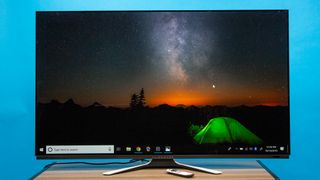
Whether you edit videos for a living or want to play the best Steam games at fast refresh rates, the best monitors can transform the way you get work tasks done and elevate your evenings when it comes time to game.
The monitors I've recommended in this buying guide range from sensational 4K screens to more budget-friendly 1080p displays. Each one has been tested by my expert colleagues, and we use a Klein K 10-A colorimeter to assess how accurate the colors these monitors produce are. We also conduct additional tests to evaluate HDR brightness and response times.
The best overall monitor I currently recommend to most people is the brilliant LG UltraGear 45GR75DC. It's one of the finest curved displays you can buy thanks to its vivid and super-sharp native 3.5K screen resolution. If money is on the tight side, my favorite budget monitor of the moment is the Asus TUF Gaming VG28UQL1A, which has a blistering 144Hz refresh rate that makes desktop navigation a breezy dream.
My picks of the best monitors I've chosen below will make completing everyday work assignments more enjoyable, whether you’re in an office or working/gaming from the comfort of home.
The quick list

Not only is this LG both one of the best gaming and finest curved monitors, it's also my pick for the best overall PC screen. Its blazing performance, sharp 3.5K picture and immersive 1500R curvature make it the ultimate PC panel for both work and play.

You'll struggle to find many better equipped 4K monitors than the VG28UQL1A, especially at a relatively wallet-friendly price point. With a 144 Hz refresh rate, this Asus excels at both work tasks and fast-paced gaming.
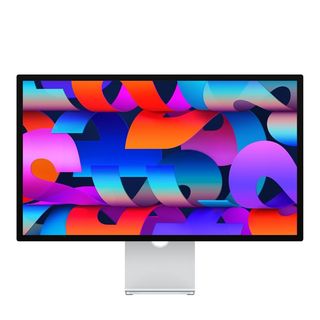
A great 5K monitor that has a lot more to offer than just a fantastic 27-inch screen. We love its six-speaker sound system and 12MP ultrawide camera.
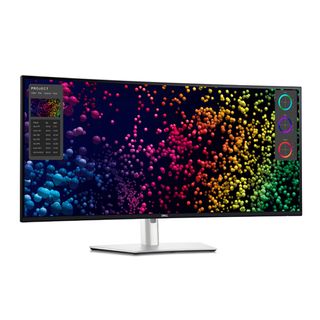
This large and in charge 40-inch curved monitor is fantastic. At $1,900, it's going to put a big dent in your change purse, but picture quality is outstanding and it's a producitivity machine.
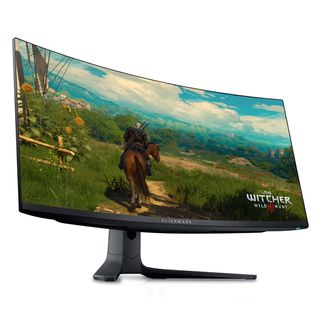
Our favorite ultrawide is this superb QD-OLED display. With a 120 Hz refresh rate, amazing black levels and an immersive 21:9 aspect ratio, this is a top-tier monitor for both work and play.

This 55-inch beast serves up stunning spectacle due to its sheer size, while its gorgeous OLED panel impresses with a 120 Hz refresh rate and Nvidia G-Sync support.
Load the rest...

A drool-worthy 2.5k OLED screen that sports a phenomenal 240Hz refresh rate and an equally impressive 0.03ms response time. If you’re an FPS fan, you just found your dream display.

A crisp and vibrant screen that shows off mini-LED at its best. Blacks may not quite be “OLED-good” but this stunning 32-inch screens sports enough dimming zones to deliver outstanding contrast.

A monitor that is as stupendous as it is sizable. This utter goliath of a screen is an OLED beast with near perfect picture uniformity that’s capable of playing the best PC games at a knockout 240Hz.
About the author

My name's Dave and I look after many of our computing-focused buying guides, including not only best monitors, but also best gaming monitors, best webcams and best PC games. I've been building my own rigs for 20 years at this point, and I have an obsessive love for desktop components, be it the fastest GPUs or the best gaming CPUs. I'm also absolutely besotted by display technology and have owned more monitors at this point than I've had more hot dinners. Probably.
The best monitors you can buy today
Why you can trust Tom's Guide
The best overall monitor

Specifications
Reasons to buy
Reasons to avoid
This might seem like a bold choice for best overall monitor considering the LG Ultragear 45GR75DC’s attention-grabbing form factor, but I absolutely stand behind this pick. I now feel we’re at the point where owning an ultrawide curved display no longer needs to be the exclusive purvey of hardcore gamers. This wonderfull LG screen ticks every box from what you could want from a modern PC monitor, whether you’re going to be using it for video or image editing or you mainly plan to play the best PC games on this behemoth.
The LG UltraGear 45GR75DC is damn near a perfect monitor that is superbly priced for the features it offers. For $899 (and LG has already started offering this amazing panel for $100 less than that during certain flash sales) you’re getting an unbelievable amount of bang for your buck. Just take into account you’re going to need a fair amount of office space to house this supersized screen.
This 45-inch monster may require a large desk, but its 5,120 x 1,440 32:9 panel makes it a dream display for productivity tasks, even though it's primarily marketed as a gaming monitor. And when it comes to playing the best PC games on this bad boy? Fuhgeddaboudit. A 200Hz refresh rate. 1ms response times. That utterly immersive 1500R curvature. There’s no other monitor currently out there on the market that offers so much for both professionals working from home and hardcore gamers at such a keenly competitive price point.
Read our full LG UltraGear 45GR75C review.
The best budget monitor

Specifications
Reasons to buy
Reasons to avoid
Calling the Asus TUF Gaming VG28UQL1A a budget option when it regularly retails for north of $500 may seem a little rich (literally), I know. But c'mon, we're living in a world where people are prepared to sink their life savings into an Apple Vision Pro. Viewed in that context, I think this excellent 4K monitor is a bargain.
It doesn't skimp on features, either. Future-proofing is ensured thanks to a duo of HDM1 2.1 ports, while the speedy 144Hz refresh rate is fantastic for both gaming and making general desktop browsing feels hugely responsive. The VG28UQL1A's handling of HDR is also solid, though it could be a little more accurate. The menus on Asus’ monitor could be slightly more intuitive too, but in the grand scheme of things, these are nitpicks, not flaws that will overly impact your enjoyment of this brilliant budget screen.
There are a couple of big features that really set the VG28UQL1A apart from the majority of screens you’ll find at this price point. First, the fact it has not one, but four HDMI ports is incredibly rare not just for a $500 panel, but even far more expensive monitors. As I previously mentioned though, only two of them are HDMI 2.1. The other two are HDMI 2.0, meaning they’re limited to a max refresh rate of 60HZ at 4K. If you don’t mind bumping down your screen resolution to 1440p, you can hit this monitor’s max 144Hz with using an HDMI 2.0 cable.
One final feature I really like about the VG28UQL1A is its impressive speakers that provide robust, well-rounded audio; another rarity in a sub $1,000 monitor. There’s no doubt in my mind that this is one of the best, reasonably affordable monitors you can buy.
Read our full Asus TUF Gaming VG28UQL1A review.
The best MacBook monitor
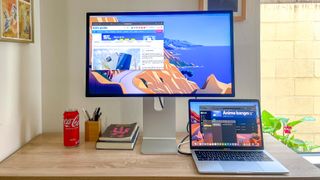
Specifications
Reasons to buy
Reasons to avoid
“Immerse yourself in a 5K dream” is how Apple continues to promote its exceptionally sharp-looking monitor. As someone who adores high resolutions screens, I’m all about that sales pitch. The 27-inch Studio Display is a truly terrific 5K (5120 x 2880) monitor; one that delivers a lot of the value of Apple's $6,000 Pro Display XDR in a much more affordable (though hardly cheap) package.
Starting at $1,599 for the standard class version and rising to $1,899 for the nano-texture glass option, it’s still obviously expensive. Yet if you’ve got that sort of cash to spare, let me tell you that you definitely won’t be disappointed by a monitor that boasts exactly the sort of pristine picture quality I’ve come to expect from Apple displays throughout the years.
Like the Pro Display XDR, the Studio Display offers useful features for creative professionals, including a range of reference modes and P3 wide color gamut support. Yet it also has unique features that any Mac user can enjoy, like an ultra impressive (for a monitor) six-speaker sound system and a 12MP ultrawide camera that supports Apple's Center Stage feature, courtesy of an onboard A13 Bionic chip.
With its ultrawide camera, fantastic speaker setup and gorgeous 27-inch 5K screen, this is easily one of the best monitors for MacBook Pro owners seeking an external display. Though seeing as it needs to be hooked up to a Mac to download the latest firmware — it’s definitely not a hugely sensible buy if you’re a PC user first and foremost. If you’re a Mac person? Look no further for your next monitor purchase.
Read our full Apple Studio Display review.
The best curved monitor

Specifications
Reasons to buy
Reasons to avoid
Pricey but oh so pretty at a little over $1,900 at time of writing, the Dell UltraSharp 40 Curved Thunderbolt Hub Monitor is a thing of beauty. Yes, it costs as much as a premium desktop PC, I’ll give you that. Yet for me, that price is justified in large part thanks to the UltraSharp’s outstanding color reproudciton, its wonderful 5K/120Hz curved screen and a port selection which is seriously tough to top.
Big is beautiful, right? That's certainly the case with Dell UltraSharp 40 Curved Thunderbolt Hub Monitor, which I really admire for being a total beast when it comes to productivity. Sure, this 40-inch model it's not exactly affordable, and you’ll certainly need a good amount of desk space to get the most out of it. Thankfully smaller, far cheaper versions are available if you’re working with a cramped office setup.
It's hard not to be floored by the sheer spectacle of the UltraSharp 40 Curved Thunderbolt Hub. Obviously its size is the first thing that catches the eye, but its stunning 5K 120Hz really is a sight to behold, with accurate colour reproduction being a real highlight.
For me, what really separates the UltraSharp from other curved monitors is its pop-out, front-facing USB hub, which is not only great for charging devices, but also when it comes to decluttering your desk by offering a great cable management solution. This is a truly unique display even by curved monitor standards, which is why it gets the nod from me for the best and most interesting curved PC display you can pick up today.
Read our full Dell UltraSharp 40 Curved Thunderbolt Hub Monitor review.
The best ultrawide monitor

Specifications
Reasons to buy
Reasons to avoid
A sensational QD-OLED ultrawide monitor that screams class at every turn, the Alienware AW3423DWF is one of the classiest displays I’ve ever had the privilege of owning. A follow-up to the already brilliant Alienware 34 AW3423DW, this newer model dropped its price tag and added the welcome addition of an HDMI 2.1 port. That means the AW3423DWF is now far more suited to getting the most out of Xbox Series X and PS5 than its G-Sync cousin. On that note, this model supports FreeSync, meaning it will kibosh screen-tearing while providing the smoothest gameplay experience possible, regardless of whether you own an AMD or Nvidia GPU.
When it comes to gaming performance, this Alienware produces results that are as impressive as the monitor's bold design choices. If you use its DisplayPort connection, this screen can hit a mightily fast 165 Hz refresh rate, which makes it perfect for playing fast-paced shooters, like Doom Eternal. The hordes of Hell won’t stand a chance if you hook up one of the best gaming PCs to the Alienware AW3423DWF.
This display also impressives with its punchy HDR modes, which make the finest games on Steam look even more vibrant, especially if you’re a Windows 11 user and turn on your operating system’s Auto HDR feature. Solid pixel-cleaning settings also help prevent against OLED burn-in (a screen defect that’s more or less sadly exclusive to OLED, though is thankfully becoming more avoidable).
Throw in the effortlessly inky blacks OLED brings to the table and you're left with a truly stunning monitor. That 21:9 aspect ratio doesn't just make the best PC games more immersive, the added screen real estate is a dream when navigating multiple browser windows or editing images in Photoshop.
So whether you’re a hardcore gamer who wants to play their favorite titles on one of the finest Alienware screens Dell has ever produced or you need a display that can showcase all the Chrome/Edge/Safari tabs you could ever reasonably need to see at once, there are few monitors I find easier to recommend than the effortlessly excellent Alienware AW3423DWF.
Read our full Alienware AW3423DWF QD-OLED gaming monitor review.
The best OLED monitor

Specifications
Reasons to buy
Reasons to avoid
Currently, you can normally find the Alienware AW5520QF 55-Inch OLED gaming monitor for around $1,700. While I’d grant you that’s not chump change, you’re getting one hell of a giant OLED display that feels fabulous to game on.
With a size that toes the line between TV and monitor, this 55-inch display has a highly polished design, a cornucopia of great features and key gaming-focused plus points, such as DisplayPort connectivity and fast 120Hz refresh rates. And while it's technically not a TV, it also comes with a slick remote control to adjust the picture settings and navigate menus from the comfort of your couch. As someone who has lost count of how many times I’ve thrown a massive temper tantrum trying to navigate menus with buttons that normally lie on the underside of a monitor, that remote is a real life-saver.
But it's not just a TV-sized monitor, it's also a superb OLED gaming display. The Alienware boasts a huge color gamut and accuracy that rivals some of the best TVs on the market. The AW5520QF's price will no doubt scare off folks on a budget, but if you do your PC or console gaming in the living room or want a truly premium monitor, Alienware's colossal screen is better suited to the job than pretty much any other monitor I can currently think of. And since a computer can stream almost anything, you'll be able to watch, listen to or play whatever you want on the Alienware AW5520QF.
Read our full Alienware AW5520QF review.
The best low-latency monitor

Specifications
Reasons to buy
Reasons to avoid
The LG UltraGear 27GR95QE-B officially retails for $900, yet you can often find it on sale at the likes of Amazon, Best Buy and LG’s own site for around $699. Myself and my fellow computing colleagues were desperate to test out this OLED monitor for what felt like the longest time since it was first announced by LG back in late 2022. The good news? It’s proven to be one of the most gorgeous gaming monitors my eyeballs have ever had to pleasure of viewing.
But what exactly makes the LG UltraGear 27GR95QE-B so great? First off, I like that the design of this display and its frame are fairly subdued compared to many other gaming monitors on the market, which often come across as a little flash for my tastes. At 27 inches, it may not exactly be huge, but the flipside to that coin is that it will comfortably fit on most desks without hogging up too much space.
What really sets this UltraGear apart from most of the competition is its jaw-dropping visual fidelity its 2.5K OLED display provides. Games look phenomenal on this monitor, as does streaming content. The super fast 0.03ms response time and 240Hz refresh rate also deliver an enjoyable gaming experience. The fact it’s less than $1,000 is also a big deal. We’ve reviewed many, far more expensive monitors than the LG UltraGear 27GR95QE-B that don’t come close to handing in this caliber of picture quality.
The monitor isn't perfect, however. It's considerably dimmer than some of its competitors, and the fact you can't access all of its menu options without a remote also makes it more fiddly to tweak settings than I’d like. The astonishing image quality and speedy performance mostly help me overlook these deficiencies, of course. Still, that doesn’t mean they're not worth pointing out.
Read our full LG UltraGear 27 review.
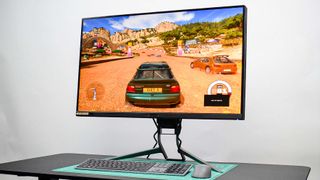
The best mini-LED monitor
Specifications
Reasons to buy
Reasons to avoid
The Acer Predator X32 FP ($1,399) gaming monitor balances stunning visual fidelity and rock-solid performance. This 32-inch behemoth features a gorgeous 4K mini-LED 160Hz display that’s both crisp and colorful. On top of that, the monitor comes with a ton of ports and an a unique design that I assure sure will command your attention should you decide to take the plunge on this attractive screen.
The Predator X32 FP has an aggressive all-black design that certainly helps it live up to its “Predator” moniker the Acer brand has built up over the years. I like the thick 32-inch screen and wide stand combo. And even though its lacks RGB lighting around its frame, which I don’t really see as being a big deal and definitely not one that should sway your purchasing decision. I bet my bottom dollar the X32 FP is unlikely to be mistaken for anything other than a stellar gaming monitor.
If you want my two cents (and I’ll stop using money-centric tunrs of phrase, I promise), I reckon this is one of best gaming monitors out there. That’s thanks to the Acer Predator X32 FP’s blazing-fast performance, smooth refresh rate and vibrant visuals. There’s no getting around the fact it will take up a fair amount of space on your average desk, but the monitor’s large display helps draw you into the games you’re playing. For me, 32 inches is the absolute sweet spot that I’d recommend to most users when it comes to monitor size.
While more affordable options exist, the Predator X32 FP is still a great gaming monitor. If you can find it going for under $1,000 in a sale, I highly recommend on picking this display up. There’s really not much to dislike about a mini-LED monitor that provides deep, convincing black levels that aren’t all that far away from OLED levels. Game a lot in a dark room? Then this particular Predator is a great choice thanks to its vibrant contrast.
Read our full Acer Predator X32 FP gaming monitor review.
The best super ultrawide monitor

Specifications
Reasons to buy
Reasons to avoid
This is a screen that brings the spectacle. And then some. The Samsung Odyssey OLED G9 instantly grabs your attention thanks to its stupendous size. This is actually my current gaming monitor I use for both enjoying my favorite Steam games and doing my job on. Heck, I wrote this and every other entry above on my spectuaur super ultrawide display.
This was the first-ever 49-inch OLED gaming monitor, and even a year after its initial release, it's easily still one of the immersive panels I’ve ever clapped eyes on.
Yes, it's pretty pricey. Yet I often seen it retail for as low as $1,299 in sales. While that’s still a lot of cash, the almost ridiculous amount of screen real estate you’re getting for that investment makes the Samsung Odyssey OLED G9 a no-brainer purchase for fans of the 32:9 aspect ratio that can afford it.
Having owned 21:9 traditional ultrawide monitors for years before I picked up my current Samsung beast, I can honestly say I’d struggle to return to a PC display that wasn’t super ultrawide. That aspect ratio essentially means you’re getting two 16:9 monitors squished together in a single display, and when it comes to productivity, it’s bliss to work on. It’s easy to have half the screen dedicated to internet tabs and the other for Photoshop editing, for example.
If you have the money to spare, you're getting a feature-rich monitor with 1,800R curvature to give you wrap-around vision that makes it instantly effortless to lose yourself in the modern PC games. This Samsung's super-speedy 0.03ms response time and 240Hz refresh rate also ensure it's the ideal monitor for fans of first-person shooter games.
There's so much to admire here with the sheer class and craft Samsung has clearly put into making this incredible OLED super ultrawide. Providing you have the funds (and desk space), you should pick one up immediately if you love 32:9 screens.
See our full Samsung Odyssey OLED G9 review.
How to choose the best monitor for you
Finding the best monitor can be a confusing experience when you don't know what to look for. There are a few key details to pay attention to for any monitor, and some specific advice for certain specialized uses.
We evaluate every monitor on the same basic criteria, starting with size and resolution. In general, more is better here: the bigger the display and the higher the resolution, the more you can see. We also measure several aspects of picture quality as part of our review process, looking at how many colors the monitor can produce (reported as color gamut) and how accurately it displays each color (reported as a Delta-E rating). Better scores here make for a better display in every instance. Display brightness is another factor, but higher brightness doesn't always translate into a better display, though it does suggest that a monitor will deliver more vibrant color and may offer HDR (high dynamic range) support.
For some uses, like professional graphics work, you'll need to watch for additional features, and refinements on the basics. If color quality is important in your work, you should look for factory calibrated displays, and pay close attention to the color accuracy and gamut portions of our reviews. You'll also want to spring for matte-finish panels, displays with shade hoods and adjustable monitor stands that let you find the perfect viewing angle.
Things to consider
Size: A larger monitor is generally a better purchase simply because it offers the most visual real estate, which is better for both full-screen media consumption and split-screen multitasking. Higher resolution is also better, since it allows better detail and lets you see more information in the same screen size. The old phrase "bigger is better" applies to both here, and we recommend opting for larger screens and higher resolution whenever possible.
Response time: If you care about playing the latest games under the most optimal conditions, you'll want to look for a monitor with low response time. This measures how long it takes for the display to respond to what you're doing, and it's typically expressed as a measurement (in milliseconds) of how long it takes a pixel on the display to go from one color to another and back again.
Unless you're planning to play games that demand quick reflexes or pinpoint accuracy, you really don't need to worry about response time. In general, anything under 10ms is good, though for gaming under 5ms is better. Many gaming monitors promise response times as low as 1ms, which is about as good as you can hope for.
Refresh rate: Refresh rate measures how many times per second your monitor is able to to draw a new image. It's measured in Hertz, and again if you're not planning on doing a lot of intense gaming you probably don't need to worry about this very much. Most monitor achieve refresh rates of 60Hz or less, and that's plenty for watching videos or getting work done. However, if you want to play games at higher than 60 frames per second, or you're planning on working with video at framerates higher than 60 fps, you'll want a monitor with higher refresh rates. 120Hz is good, 144Hz is better, and there are even gaming monitors that offer refresh rates of 240Hz or higher.
Finding a good gaming monitor
Gaming also has its own unique concerns. When the difference between victory and defeat can come down to split second timing, you can't afford long lag times. If you want one of the best gaming monitors, we recommend finding a display that offers response times of 15 milliseconds or less.
Smoother gameplay is also part of what you pay for in a gaming monitor, so pay attention to what frame syncing technology a monitor supports. AMD FreeSync and Nvidia G-Sync both allow the monitor and the graphics card to coordinate the refresh rate of the screen with the output of the GPU, but they approach this problem in slightly different ways, and a given monitor will likely provide support for only one or the other format. If your gaming rig uses Nvidia cards, you'll want a G-Sync capable monitor, while AMD-based systems will play nicely with a FreeSync display.
Choosing a secondary monitor
For a secondary monitor to use on the road, you'll want something that's small enough to carry with your laptop, and simple enough to set up and use within moments. For this, we recommend choosing one with a USB-C port for connectivity, as that allows the monitor to use a single cable for both video signal and power. While the basic advice of "bigger is better" does still have some application here, it's also worth considering how well a portable monitor matches the size of your laptop display, since a larger display panel will have different dimensions than your laptop, and may not fit as easily into your backpack or laptop bag.
How we tested these monitors
When seeking out the best monitors, we test every display we review with our Klein K 10-A colorimeter, paired with testing software. We use this high-quality scope to measure the display's brightness levels, color gamut and color accuracy.
Brightness is measured in nits, or candela per square metre (cd/m2). More nits means a higher brightness, which translates into clearer picture, brighter color and usually a more realistic looking image. For basic monitors, we expect a display backlight to produce between 2-300 nits of brightness, though HDR (high dynamic range) displays will often exceed that with a higher maximum brightness. However, brightness alone doesn't make for a great display, since some monitors will wash out colors or offer inconsistent backlight that varies in some portions of the display panel.
HDR also presents its own testing challenges, as new capabilities and standards allow a monitor to offer higher peak luminance than our standard tests will register. When in doubt, read an individual review for a discussion of these issues, and how an individual product will handle each.
Color is the other big concern for displays. Monitors that produce more colors have a larger color gamut, as measured under the sRGB or P3 color standards. This is presented as a percentage, with higher percentages indicating more colors.
Color accuracy is the other aspect of color, which lets us measure how closely a monitor can reproduce a given shade. This is presented as a Delta-E rating, which indicates the level of deviation from perfect. Zero is a perfect score, while higher numbers indicate lower accuracy.
We also test a display's response time, using a Leo Bodnar input lag tester. This device measures how long it takes a signal to travel from a source device to the monitor and show up on the display. Measured in milliseconds, this number is most useful for gamers and anyone that needs immediate onscreen feedback from any input.
Finally, every monitor we test is also used for web browsing, streaming video and gaming, as well as the writing of the review itself. Our anecdotal testing will often allow us to note the quirks of a display that lab testing might miss, whether it's difficulty in scaling content or issues with backlight or color reproduction.
Sign up to get the BEST of Tom's Guide direct to your inbox.
Here at Tom’s Guide our expert editors are committed to bringing you the best news, reviews and guides to help you stay informed and ahead of the curve!

Dave is a computing editor at Tom’s Guide and covers everything from cutting edge laptops to ultrawide monitors. When he’s not worrying about dead pixels, Dave enjoys regularly rebuilding his PC for absolutely no reason at all. In a previous life, he worked as a video game journalist for 15 years, with bylines across GamesRadar+, PC Gamer and TechRadar. Despite owning a graphics card that costs roughly the same as your average used car, he still enjoys gaming on the go and is regularly glued to his Switch. Away from tech, most of Dave’s time is taken up by walking his husky, buying new TVs at an embarrassing rate and obsessing over his beloved Arsenal.
- Alex WawroSenior Editor Computing